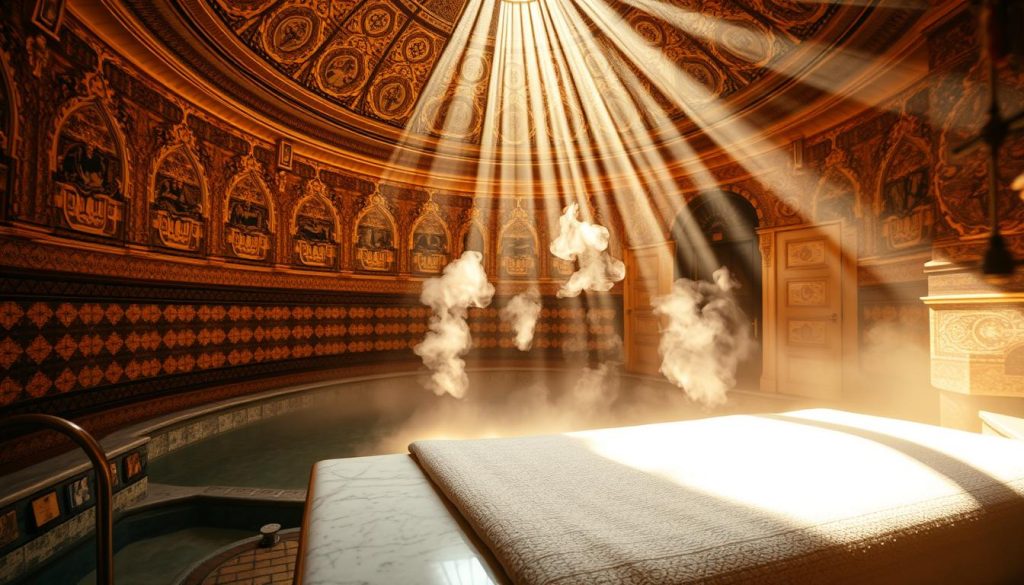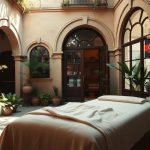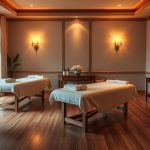Ready to turn a long day of sightseeing into pure calm? Step into a centuries-old tradition where steam, heated marble, and skilled hands reset tired muscles. This guided session blends history and care in the heart of the city.
Cağaloğlu Hammam and Aga Hamami bring authentic settings that date back to the 15th century and earlier. Expect 60–90 minutes of warm-up, kese exfoliation, foam massage, and rinsing. Locals suggest early morning or after 6 PM to skip the crowds.
Many venues supply peştemal, slippers, and basic soap. Bring small bills for tips (10–20%) and hydrate afterward with mineral water or ayran. Book ahead during peak seasons to lock your preferred time slot and add-ons like oil massage or aromatherapy.
Key Takeaways
- Historic baths offer a relaxing break amid Fatih’s sights.
- Sessions run about 60–90 minutes, with heat, scrub, and foam massage.
- Visit early or after 6 PM to avoid crowds and enjoy calm.
- Most hammams provide basics; carry small bills for tipping.
- Booking ahead ensures your preferred time and treatment.
Why a Hammam in Fatih Elevates Your First-Time Istanbul Trip
A Fatih hammam gives first-time travelers an easy, central starting point in the city. More than 60 baths operate across the metropolis, many open from early morning until late at night.
Choose the best time visit by aiming for early morning or after 6 PM. These windows are quieter, so you can relax before or after sightseeing without crowds.
Historic settings in the Old City sit close to headline landmarks. That means you can pair the ritual with the Blue Mosque or Grand Bazaar and save travel time.
“The hammam blends cultural immersion and gentle wellness into a single local ritual.”
- Simple guidance from staff makes the visit smooth for a first time guest.
- Tourist-friendly packages bundle essentials and clear choices.
- Use the ritual as a jet-lag reset or a calm pause during your trip.
| Time Slot | Why Choose It | Nearby Perks |
|---|---|---|
| Early Morning | Quiet, cool marble, calm start | Easy walk to sunrise views |
| Afternoon | Peak energy, fuller services | Close to markets and lunch spots |
| After 6 PM | Fewer crowds, relaxed evening | Pair with dinner in the Old City |
Understanding the Tradition: The History and Heart of Turkish Baths
The story of the hammam begins where Roman, Byzantine, and Ottoman practices meet. Public baths shifted from standing pools to flowing-water systems under Ottoman influence. This change matched Islamic purification rules and reshaped public life.
From Roman and Byzantine roots to Ottoman-era hammams
The Roman and Byzantine world built large public baths that served hygiene and social needs. Over the years, the Ottomans reinvented these spaces.
They replaced still pools with continuous basins and channels so water could flow and be refreshed. The Ottoman state ultimately built thousands of public baths across many cities, making them common features of city life.
Why locals still love the hammam today
Hammams became social hubs where people met across class lines. Rituals like purification before prayer and the gelin hamamı tied the baths to life events.
“More than cleansing, the hammam is where community, news, and care come together.”
- You’ll notice architectural layers: domes, marble basins, and starry skylights.
- Modern treatments now sit beside traditional rituals, so the experience feels both old and fresh.
- Knowing the history gives you more appreciation when you visit restored historic hammams today.
For a practical guide to what to expect, see this Turkish hammam guide.
How the Turkish Hammam Works: Heat, Steam, Scrub, and Foam
A typical session unfolds through steady warmth, repeated rinses, and skilled hands working in rhythm. You move through warm rooms and follow a clear sequence that balances heat and water.
The marble platform and flowing water experience
You begin on the heated marble göbektaşı where attendants pour bowls from marble basins to relax muscles.
This gradual warmth preps skin and opens pores before the scrub starts.
Kese exfoliation, foam massage, and optional oil treatments
The kese is vigorous—stronger than a typical spa scrub—and clears dead skin while boosting circulation.
After that, a foam massage follows. It feels like sinking into a soft cloud and leaves skin smooth.
You can add oil treatments or a face mask for more hydration and deeper calm.
Typical session length and how you’ll feel afterward
Most sessions run about 60–90 minutes. Expect small lounge moments for tea and quiet time afterward.
- You can ask staff to change pressure or pace anytime; comfort comes first.
- This way of pausing helps you shift from city bustle to relaxed focus.
- Afterwards you’ll feel both energized and calm—ideal before an evening stroll.
“The ritual blends heat, touch, and scent into a restoring ritual that truly resets the body.”
Step-by-Step: Your First Hammam Visit in the Old City
Start by reserving a time online or by phone, then pick the treatment option that fits your needs. Many baths run from early morning to late at night, so off-peak windows are before noon or after 6 PM.
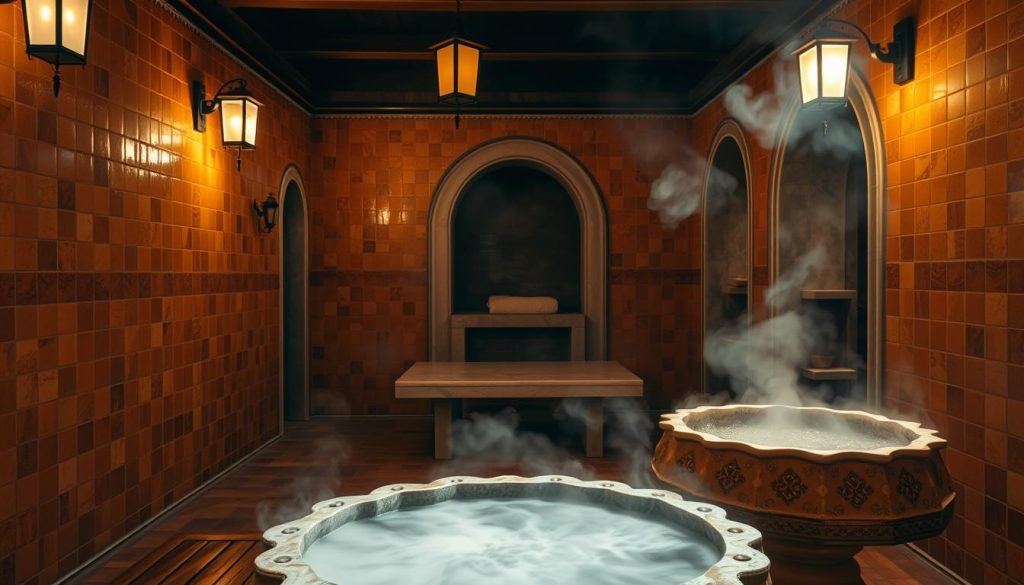
Booking your time slot and choosing a package
Book a time slot to lock in the schedule. You can select packages that include kese, foam massage, or oil add-ons. Pick the option that matches pressure and length so you relax during the session.
What’s provided vs. what to bring
Most hammams supply a peştemal and slippers. Bring swimwear if you prefer extra modesty and sensitive-skin toiletries if needed.
Carry small bills for tips (10–20%) and a change of undergarments. Lockers are common; store valuables and pack light to keep the process simple.
Aftercare: hydration and cooling down
Arrive 10–15 minutes early to settle in and sip water before steam. After the ritual, rehydrate with mineral water or ayran and cool down in the lounge.
Plan a gentle schedule for the rest of your trip—think a short stroll or an easy dinner—to preserve that calm glow from the experience in this city.
“Share pressure or modesty preferences with attendants — staff are experienced and accommodating.”
- Book ahead online or by phone.
- Confirm what’s provided to travel light.
- Bring cash for tips and simple toiletries.
Etiquette and What to Wear: Modesty, Mixed Areas, and Comfort
Simple gestures and soft voices keep the atmosphere calm across the bathing rooms.
What to wear: You’ll usually don a peştemal and optional swimwear. Adjust modesty to the house rules; topless bathing may occur in women’s areas. Bring flip-flops if you prefer your own, though many venues supply footwear.
Practical rules and behavior
Many sites offer gender-separate services for scrub and massage even when steam areas are mixed. Keep voices low and leave phones in lockers to respect other people.
Do not take photos inside bathing areas. If you feel unsure, ask attendants before you enter service rooms. They guide first-time visitors kindly and explain the proper way to rinse between stages.
- You can discreetly signal modesty preferences to staff.
- Follow local flow: rinse before and after each stage and move calmly through areas.
- If you plan a couple’s option, see this couples guide for practical tips.
This brief code of conduct helps every tourist enjoy a respectful, smooth experience in the city’s historic baths.
Best Time to Visit Istanbul for Baths and Sightseeing
Plan visits around mild months so you can pair sightseeing with a calming bath without battling crowds. Spring (April–June) and autumn (September–November) offer pleasant weather and manageable lines at major sights and baths.
Seasonal timing: These shoulder months bring comfortable temperatures and fewer people in the old city. Summer often climbs above 30°C, so midday heat can make outdoor walking uncomfortable.
Daily timing: Aim for early mornings or sessions after 6 PM to enjoy quieter hammam rooms and better photo opportunities. Many baths are notably less crowded at these hours.
- Spring and fall are the best time for pleasant weather and shorter queues.
- Book baths and major attractions on alternate days to pace energy and sightsee smartly.
- If heat bothers you, plan indoor museums or a quiet hammam at midday and hydrate often.
- Winter can be cozy for baths; pack layers for outdoor sites and enjoy warm tea after the ritual.
“Off-peak timing boosts relaxation and gives you calmer, more photogenic moments around the old city.”
Tourists’ Favorite: Enhance Your Istanbul Vacation with a Massage Experience in
Local bathhouses group services into short, standard, and deluxe choices for flexible timing and budgets. Many venues list scrub, foam massage, and optional oil treatments so you can tailor the session to your trip schedule.
English-speaking staff and online booking make the process easy for people who need guidance. You can compare places and package options to match modesty, pressure, and price.
Book online to secure a preferred time slot and skip queues during busy periods. That leaves more time for nearby sites and evening plans.
- Choose a quick scrub-and-foam or extend the time for an oil treatment.
- Find friendly staff who explain each step and adjust pressure on request.
- Upgrade with add-ons like face masks or aromatherapy to suit mood and skin.
- Pick places near Fatih to cut transfer time and link wellness with sightseeing.
| Package Level | What’s Included | Best For |
|---|---|---|
| Short | Warm-up, kese scrub, quick rinse | Guests on tight time |
| Standard | Scrub, foam massage, rinse, lounge tea | Most first-time visitors |
| Deluxe | Oil massage, face mask, aromatherapy add-ons | Those seeking deeper relaxation |
“You’ll leave refreshed and ready for an evening in the Old City.”
Authentic Hammam Options Near Fatih and Beyond
Options around the old city range from late-Ottoman showpieces to centuries-old community baths that still draw locals. Pick the mood you want before you book.
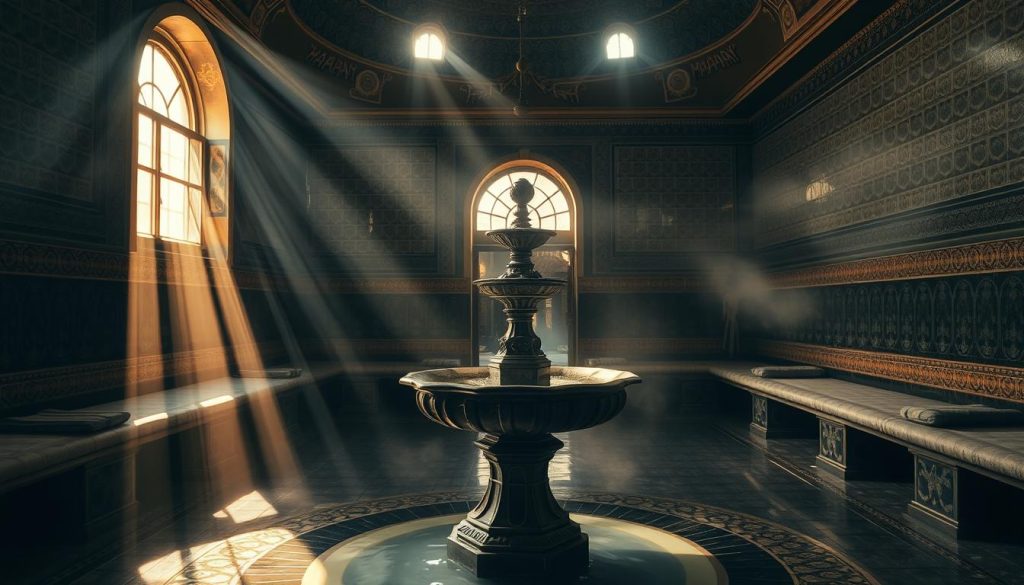
Historic icons: Cağaloğlu and Kılıç Ali Paşa Hammamı
Cağaloğlu Hammam is among the last grand Ottoman hammams. It shows baroque details and has prices starting near 60€.
Kılıç Ali Paşa Hammamı dates from 1578–1583 and was built by Mimar Sinan. It finished a seven-year restoration that renewed its architectural drama.
Local-feel picks: Gedikpaşa and Çinili Hamamı
Gedikpaşa (1475) gives an affordable, authentic vibe. Çinili Hamamı in Üsküdar (1640) keeps many original features and attracts mainly locals.
- You’ll choose headline places for architecture and polished service or neighborhood houses for an honest feel.
- Weigh travel time against the draw of unique design and centuries of history when you plan a visit.
- Check current packages and reserve popular time slots online. For more booking guidance, see visit options.
| Hammam | Era / years | Best for |
|---|---|---|
| Cağaloğlu | Late Ottoman / 1800s | Grand interiors, polished service |
| Kılıç Ali Paşa | 1578–1583 | Architectural history, restored classic |
| Gedikpaşa | 1475 | Budget-friendly, local vibe |
| Çinili (Üsküdar) | 1640 | Original features, neighborhood crowd |
Plan the Perfect Day in Fatih: Hammam Plus Blue Mosque, Hagia Sophia, and the Grand Bazaar
Make the most of one well-paced day in Sultanahmet. Start early and build slow breaks so you see top monuments and keep energy for an evening bath.
Smart sequencing to beat the heat and the crowds
Begin at the Blue Mosque for cooler air and clear views before crowds swell. Cross the square to Hagia Sophia next, arriving before mid-morning lines form.
By midday, stroll into the Grand Bazaar and browse at a calm pace. Reserve hammam time after 6 PM to relax when marble rooms are quieter.
- Early Blue Mosque visit, then Hagia Sophia before queues.
- Grand Bazaar browsing around noon, light lunch, short rest.
- Reserve late-afternoon session and rest your feet before evening plans.
Where to pause for tea, views, and classic photos
Take photo stops near the Hippodrome and Sultanahmet Square when light is soft. These spots give classic frames and calm breathing space.
| Time | Pause | Why |
|---|---|---|
| Early morning | Blue Mosque steps | Cool light, fewer people |
| Midday | Café near Grand Bazaar | Rest and tea before afternoon |
| Late afternoon | Rooftop or square views | Golden light and calm |
“Pacing gives you a clear way to cover icons without sacrificing comfort.”
Follow this flow and you will leave the city feeling rested and ready for a relaxed dinner.
Wellness Benefits: Why This Experience Feels So Good on a Busy City Day
Steam, marble warmth, and steady touch combine to ease tense muscles after a full day of walking. The bath’s heat and steam raise circulation and soften knots gathered from long hours on foot.
Traditional rinsing with flowing water aligns with purification customs and helps remove sweat and dead skin after the vigorous kese. Hydration matters: drink water or ayran after the session to replace lost fluids.
- You’ll feel deep muscle relief as heat and steam loosen tension.
- Brighter skin follows the intensive exfoliation and rinse.
- Better sleep often comes after an evening visit; it resets time-zone fatigue.
- The ritual calms breathing and lowers stress, so people relax more easily.
- You can pick gentler or stronger pressure depending on what your body needs that day.
“That light, refreshed state carries into dinner plans or a quiet evening wander around the city.”
What It Costs and How to Budget: Packages, Tips, and Value
Prices vary widely between grand historic baths and neighborhood houses, so plan your budget before you book.
Cağaloğlu Hammam packages start around 60€. Mid-range venues like Çukurcuma Hamamı often begin near 70€. Tourist-oriented spots near top sites can cost more, while local baths stay more affordable.
Plan for cash tips: 10–20% is customary, paid in small bills. Check the treatment menu before you arrive to avoid surprises and pick value-driven add-ons.
- Compare basic scrub-and-foam versus extended oil treatments to match time and budget.
- Bundle a spa stop with your hotel to cut transit and save time.
- Consider mixing one premium visit and one affordable option on a longer trip.
| Venue | Starting Price | Best For |
|---|---|---|
| Cağaloğlu | ~60€ | Historic setting, polished service |
| Çukurcuma | ~70€ | Mid-range comfort, local feel |
| Neighborhood Hamam | Lower | Budget-friendly, authentic visit |
“Set a clear budget, check the menu, and book a time that fits your day.”
For more on value and health benefits, see this pricing and value guide.
Where to Stay: Sultanahmet Convenience vs. Beyoğlu Vibes
Stay where streets match your pace—quiet lanes for calm, busy boulevards for nightlife.
Sultanahmet puts you steps from Hagia Sophia and the Blue Mosque, ideal if the main sights are your priority. That location makes pairing a historic hammam visit simple and saves transit time.
Beyoğlu (Taksim and Karaköy) offers lively evenings, cafes, galleries, and sweeping Bosphorus views. Pera-area boutiques give skyline perspectives and a creative pulse after dark.
- Pick Sultanahmet for minimal walking to headline places and easy Old City logistics.
- Choose Beyoğlu for nightlife, dining variety, and scenic terraces.
- Scan hotel amenities—rooftop terraces, spa access, or in-house hammam—for extra ease.
- Consider splitting nights between both areas to sample different city moods.
Notable stays include Henna Hotel Istanbul near the Blue Mosque and small Pera boutiques. For more planning tips on where to stay, check this best areas to stay guide, and for neighborhood service options see this local guide. Match your choices to planned wellness stops to cut transit and make the most of travel.
Getting Around: Trams, Ferries, and Walkable Old Town Streets
Central neighborhoods are easy to explore on foot. Old Town, Taksim, and Karaköy offer tight street grids that invite short walks between sights. Plan short breaks in shaded courtyards or tea gardens to rest.
The tram is the fastest way to glide between Sultanahmet and Eminönü without losing travel time to traffic. Ferries give scenic cross-Bosphorus hops that double as miniature city tours.
Pick up an Istanbulkart early at the airport or major stations. It works across buses, metro, trams, and ferries and keeps transfers smooth across nearby areas.
- You’ll rely on trams to move between historic sights quickly.
- You can walk Old Town street grids comfortably and rest often.
- Ferries add skyline views and save transit time across the water.
- Allow extra time at busy stations and docks for security checks.
- Multiple transport options make it easy to change plans if a line is crowded.
Combine a hammam stop with nearby routes so the way back to your stay is quick. For a practical primer before you go, see this first-time guide.
Useful Turkish Phrases That Smooth Your Experience
A few basic words in Turkish help you move through the city with less friction. Learn simple greetings and polite replies to make each interaction friendlier.
Start small and your efforts will be noticed. Use “Merhaba” to greet people and add “Teşekkürler” to show thanks in most places.
Try these lines:
- “Merhaba” — hello.
- “Teşekkürler” — thank you; quick and polite in shops and cafés.
- “Lütfen” — please; softens requests in taxis or kiosks.
- “Nasılsınız?” — how are you? A friendly opener to chat with locals.
- “İyi, iyi” — good, good; a short, warm reply that signals ease.
Order drinks like “Çay” (tea) or “Ayran” with confidence, and use simple phrases to confirm times or price points with drivers and staff. A little Turkish goes far: locals often respond with helpful tips or a smile.
| Phrase | Context | Why Use It |
|---|---|---|
| Merhaba / Teşekkürler | Shops, cafés, hammams | Polite greeting and thanks open doors |
| Nasılsınız? / İyi, iyi | Casual chats with people | Builds quick rapport and warmth |
| Lütfen / Price point | Taxis, markets, service desks | Clarifies requests and reduces misunderstandings |
For in-home or neighborhood service options, check a trusted local provider like home massage professionals to arrange times and details smoothly.
Taste the City: Tea, Meze, and Street Food After Your Hammam
A short walk from many baths leads to carts and cafés where warm simit and tea wait. Grab a sesame ring or roasted chestnuts and sit on a nearby bench to rest and recharge.
Light bites suit the calm after steam. Fresh pomegranate or orange juice from a vendor gives an instant vitamin lift. By the water, try balik ekmek—grilled fish tucked in bread—for a simple, savory stop.
For a fuller meal, look for meze spreads at traditional taverns. Cold plates come first, then warm dishes; many pair these with rakı if you prefer. Kadıköy and Beyoğlu host creative cafés and lively bars that put local twists on classics.
- Post-hammam snack: simit or roasted chestnuts from a nearby street corner.
- Refresh: fresh juice carts for an easy pick-me-up.
- Eat slowly: small plates, grilled fish, or meze make gentle, digestible food before a walk.
- Bookmark spots: save a few cozy cafés for morning or sunset returns.
“Stop small, taste local, and let light food carry the relaxed feeling into the rest of your city plans.”
Beyond the Old City: Rooftop Views, Asian-Side Strolls, and Easy Day Trips
After a soothing bath, let elevated viewpoints and nearby islands round out the day. Rooftop bars like 360 Istanbul and Balkon serve skyline panoramas that catch sunset light and city silhouettes.
Ferries to Kadıköy and Üsküdar open a different area vibe. Markets, narrow lanes, and seaside cafés on the Asian side feel more local and relaxed than the Old City bustle.
Consider a day trip to the Princes’ Islands—Heybeliada is calm, with beaches and small cafés. For history and hearty food, a ferry ride to Bursa rewards you with classic mosques and Iskender kebab.
- Head to rooftops for sweeping views after sunset—perfect bookends to a bath-centered day.
- Ferry across the Bosphorus to sample markets and different places fast.
- Pick one focused outing after a hammam so you keep the day balanced and restful.
- Pair street-level wanders with elevated lookouts to capture the cities from every point.
- Note favorite spots for a return visit or to share with friends back home.
“Combine quiet, elevated viewpoints and short trips to see how the world around the old city opens up.”
Conclusion
A final pause in a restored hammam ties the day’s sights into a single, calming memory.
Ottoman-era houses like Cağaloğlu and Kılıç Ali Paşa still use flowing water rituals and modern comforts. Plan your time visit for early or late slots and pick spring or fall as the best time for mild crowds.
You’ll leave knowing a bath can be part of an Old City day by the Blue Mosque, near Hagia Sophia, or after a stroll through the Grand Bazaar. Pick grand icons or quiet town places tucked on calmer streets; each place shows layers of years and people.
Practical step: book a time, sip water after, move at your own pace, and consider this Göztepe recommendation for local options.
